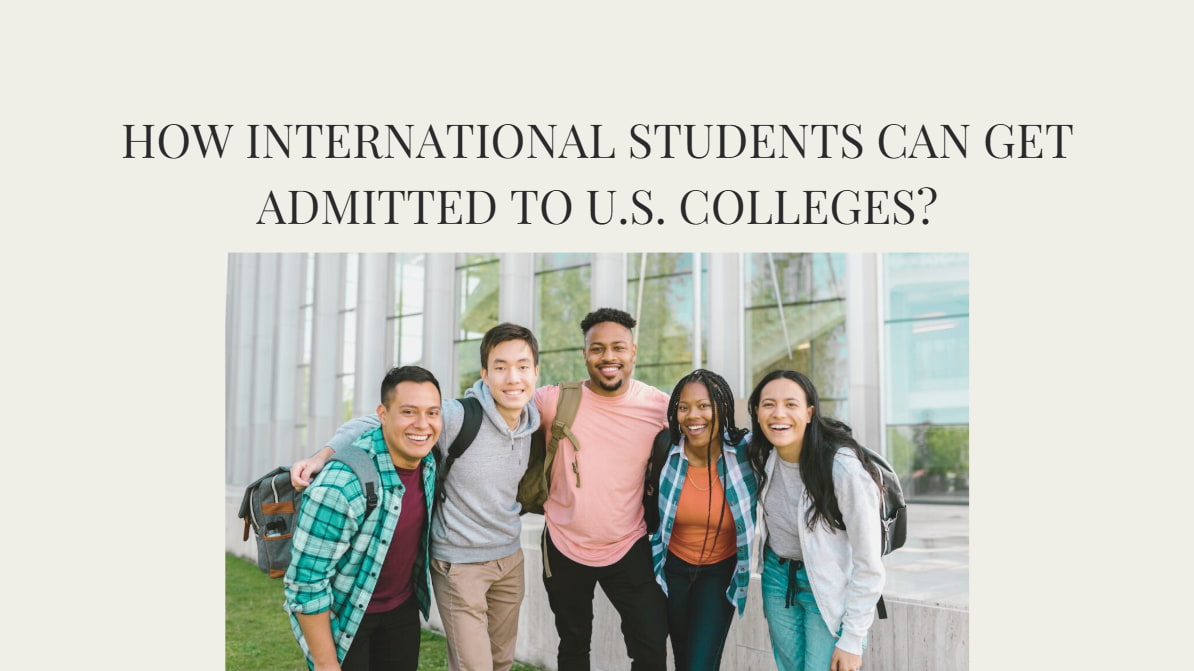Today, studying in the United States is a dream for many around the globe. After all, the U.S. is home to some of the world’s best colleges and universities, a diverse learning environment, and countless opportunities after graduation. So, if you want to know more about US college admissions for international students, read our full guide.
Can an International Student Apply for College in the USA?
US universities actively welcome international applicants.
According to Open Doors, in the 2023-24 academic year, the US hosted 1,126,690 international students.
And while deadlines and requirements can vary, every international student has the chance to apply to community colleges, public universities, or even Ivy League schools. However, the application process differs somewhat from that of domestic applicants.
First of all, your college must be SEVP-certified (Student and Exchange Visitor Program) to prepare the documents you’ll use for your student visa application. The good news is that most major universities and colleges are SEVP-approved, which makes the pathway smoother.
By the way, you can verify a school’s status through the DHS School Search and its maintained certified school lists. California, New York, Florida, Texas, and Pennsylvania had the highest counts.
How to Apply to US Colleges as an International Student?
If you break the college admissions process down into a few steps, it won’t seem like a huge challenge.
But before we move on, there’s one thing you need to understand: U.S. admissions are a holistic process. Colleges look at grades and test scores for sure, but they also want to see your story, your activities, and the unique qualities you’ll bring to campus.
With this in mind, applying to college feels different because you’ll start to see the purpose behind all the application materials you need to prepare.

1️⃣ Choose a College and Major
Create a balanced mix of schools that reflect your academic profile, financial situation, and personal preferences. A solid college list often consists of a few “reach” schools, several “match” schools, and a couple of “safety” schools.
Many students start with university rankings, but it’s important not to let those numbers make the decision for you. Sometimes, a less famous university in the United States may actually be a better fit for your goals than a big-name school.
As you research, pay attention to how schools support overseas students. Look at services such as international student advising, language support, or cultural organizations on campus.
And when it comes to your major, think carefully about your long-term career plans. If you’re aiming for medicine, engineering, or business, make sure the school has strong programs in those areas. Keep in mind that many universities allow you to change your major later, so you don’t have to lock yourself in from day one.
2️⃣ Plan Your Application Timeline
If you want to study in the USA, you need to understand different application timelines. Unlike some countries where applications happen within a short window, US institutions have different application deadlines.
Some schools have rolling admission, which means they’ll review applications as they come in until all the spots are taken. Others stick to set deadlines: early admission options like Early Decision or Early Action usually close in November, while Regular Decision deadlines tend to fall around the beginning of January.
While dates can vary from one school to another, most institutions in the US open their applications on August 1 of your final year of secondary school. Students usually submit their materials between November and January, and decisions follow a few months later.
3️⃣ Admission Requirements to Expect
Most schools will expect a combination of academic records, test scores, and proof of English language proficiency.
First, you’ll need official transcripts from your secondary school, which must be translated into English. Some colleges may also ask for your grades to be evaluated by credential services to match the GPA scale.
The following requirement is standardized testing. Traditionally, international students take the SAT or ACT as part of their application. While many schools are now test-optional, strong scores can still make your application stand out.
Next, all foreign students must show English fluency. The most widely accepted exams are:
- TOEFL (Test of English as a Foreign Language) – academic English, popular among US institutions.
- IELTS (International English Language Testing System) – a strong option for students applying to both US and non-US universities.
- Duolingo English Test – a newer, flexible online exam that more US colleges are starting to accept.
Each college sets its own minimum score requirement, so be sure to check these early and plan accordingly. For example, Arizona State University accepts a minimum TOEFL iBT score of 79, while Harvard University expects at least 100.
4️⃣ Prepare Your Application
Essays and recommendation letters play a huge role in international student applications. The admissions committee wants to know who you are, your interests, and how you’ll fit into campus life. That’s why you need:
- Personal statement – This is usually a 600-word essay, in which you write about experiences that really shaped you.
- Letters of recommendation – Ask teachers who know you well and can highlight your strengths with examples.
Our blog also has in-depth guides on choosing the right recommenders and writing standout college essays. These tips from experienced admissions consultants are definitely worth a read before you start!
5️⃣ Submit Your Application to College or University
When it’s time to submit, you need to use one of the platforms. The most widely used is the Common App, which allows you to apply to several schools in one profile. Other application forms are the Coalition Application and UC Application (for the University of California system).
Don’t forget the application fee, which usually ranges between $50–$90. Some schools offer fee waivers, so always check.
You’ll also be asked to provide financial proof to show that you can cover tuition and living costs. It might be a bank statement, a sponsor’s letter, or a certificate of financial responsibility. These documents give the university and the embassy confidence that you’re financially ready. Without this, you won’t receive the I-20 form needed for a visa.
Before hitting submit, double-check that your essays, transcripts, and recommendation letters are all in order.
6️⃣ Accept the University Offer
Once you receive your admission letter, the next big step is officially accepting your place. U.S. universities usually give admitted students a deadline (often May 1 for fall entry) to confirm their decision.
To accept, you’ll typically log into the school’s admission portal, submit an enrollment deposit (often $200–$500), and complete a short form indicating your intent to enroll.
After confirming, your university will issue the documents required for your visa application. Make sure your financial documents are up to date before this step, since the school must verify your funding.
7️⃣ Secure Your Student Visa
Now you’ve received the I-20 form from your SEVP-certified school. With this document in hand, it’s time to begin your visa process:
- Pay the SEVIS fee (be sure to keep the fee receipt) and complete the visa application form.
- Schedule your visa interview at the nearest US embassy or consulate.
- Prepare documents: admission letter, financial proof, passport, I-20, and visa forms.
During the interview, be confident and clear about your study goals.
BTW, consular officers mainly want to know that you can fund your education and that you plan to return home after your studies.
8️⃣ Get Ready for Campus Life
Congratulations—you’re almost there! After securing your visa, it’s time to plan the transition. Book your flight, register for orientation, and prepare to meet classmates from all over the world.
Culture shock is natural, but joining student groups, attending events, and staying open-minded will help you adjust quickly.
Can International Students Qualify for Financial Aid?
As a foreign student, you won’t be able to access state or federal aid. But there are still plenty of grants and scholarships for international students. These are often merit-based, but some schools may also offer need-based aid.
The best time to apply for scholarships is at the same time you apply for admission. Many U.S. colleges automatically consider international students for merit-based scholarships during the application review, so submitting your documents early can increase your chances.
For need-based aid, you’ll often need to complete forms like the CSS Profile or the International Student Financial Aid Application (ISFAA) by the admissions deadline.
In addition to university aid, external scholarships (from governments, foundations, or private organizations) usually have deadlines 9–12 months before your program starts.
Final Tips for International Students
If the whole college application process seems daunting to you, remember, you don’t have to be perfect. You just have to be prepared and authentic.
Yes, you’ll need transcripts, test scores, and financial proof, but what really sets you apart are your passions, your resilience, and the unique perspective you bring as an international student. But don’t be afraid to dream big—plenty of overseas students have stood exactly where you are now and made it to their dream schools.
And if you ever feel trapped, the best college admission consultants will help you feel more confident and make your path easier.

